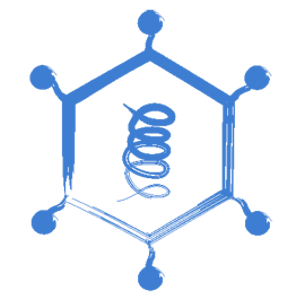|
|
| (11 intermediate revisions by 3 users not shown) |
| Line 6: |
Line 6: |
| | <categorytree mode=pages>Staphylococcus species</categorytree> | | <categorytree mode=pages>Staphylococcus species</categorytree> |
| | </b></big> | | </b></big> |
| − | |logo = | + | |logo =bugs-logo copy.png |
| | }} | | }} |
| | | | |
| − | ===Overview===
| + | [[Category:Bacterial Organisms]] |
| − | | + | [[Category:Gram_positive_bacteria]] |
| − | *Commensals on skin and mucous membranes of animals and man
| + | [[Category:Cocci]] |
| − | *Enodgenous or exogenous infections
| |
| − | *Opportunistic pyogenic infections associated with trauma, immusuppression, other infections
| |
| − | *'''Coagulase-positive''' ''S. aureus'' and ''S. intermedius'' as well as ''S. hyicus'' are important pathogens of animals
| |
| − | *Fairly stable in environment
| |
| − | *Strains selective for particular species
| |
| − | *Cause mastitis, tick pyaemia, exudative epidermitis, botryomycosis and pyoderma
| |
| − | | |
| − | ===Characteristics===
| |
| − | | |
| − | *Clusters of Gram-positive cocci
| |
| − | *At least 30 species
| |
| − | *Facultative anaerobes
| |
| − | *Catalase positive, oxidase negative, non-motile
| |
| − | *Virulent strains are coagulase positive
| |
| − | *Grow on non-enriched media
| |
| − | *White or golden colonies
| |
| − | *''S. aureus'' and ''S. intermedius'' produce double haemolysis; they produce alpha-haemolysin and beta-haemolysin
| |
| − | *''S. hyicus'' is non-haemolytic
| |
| − | *Coagulase-negative strains vary in ability to cause haemolysis
| |
| − | *Slide test to detect bound coagulase (clumping factor) on surface of bacteria; bacteria clump within 1-2 minutes
| |
| − | *Tube test detects free coagulase, secreted by bactera; positive result indicated by clot formation in tube following 24-hour incubation; free coagulase converts prothrombin to thrombin which converts fibrinogen to fibrin
| |
| − | *Biochemical tests to differentiate ''S. aureus'' and ''S. intermedius''
| |
| − | *PCR to differentiate species
| |
| − | | |
| − | ===Pathogenesis and pathogenicity===
| |
| − | | |
| − | *Cause suppurative lesions
| |
| − | *Trauma or immunosuppression predispose to infection
| |
| − | *Capsular polysaccharide, teichoic acids and potein A prevent opsonisation and therefore phagocytosis
| |
| − | *Cell wall proteins bind fibronectin and fibrinogen, allowing bacteria to attched to damaged tissues
| |
| − | *Coagulase, DNase and protein A production mark pathogenicity
| |
| − | *Haemolysins made by ''S. aureus'' and ''S. intermedius'' act as toxins
| |
| − | *Alpha-haemolysin prouces a narrow zone of complete haemolysis; this toxin causes necrosis and targets mast cells and plasma cells, whose contents cause damage
| |
| − | *Beta-haemolysin produces a wide zone of incomplete haemolysis; damages membranes and causes leakage, contributing to necrosis
| |
| − | *Also gamma and delta toxins
| |
| − | *Toxic shock syndrome toxin acts as a superantigen, which causes T cell proliferation and production of cytokines, leading to cardiovascular shock, with microthrombus formation in capillaries
| |
| − | *Enterotoxins produced by some strains of ''S. aureus'' cause food poisoning in humans
| |
| − | *Proteases, hyaluronidases and lipases facilitate survival of bacteria and spread and tissue destruction
| |
| − | | |
| − | ===Diagnosis===
| |
| − | | |
| − | *Clusters of bacteria in Gram-stained smears of pus
| |
| − | *Culture on selective blood agar and MacConkey agar
| |
| − | *No growth on MacConkey
| |
| − | *Colony characteristics, haemolysis, catalase and coagulase production
| |
| − | *Phage typing for epidemiological studies
| |
| − | | |
| − | ===Infections in dogs and cats===
| |
| − | | |
| − | *''S. intermedius'' causes [[Bacterial skin infections - Pathology#Deep pyoderma|deep pyoderma]], otitis externa, mastitis, endometritis, cystitis, osteomyelitis, wound infections, [[Joints Inflammatory - Pathology#In Dogs|dyscospondylitis]]
| |
| − | *''S. aureus'' may cause gastroenteritis
| |
| − | | |
| − | ===Coagulase-negative staphylococci===
| |
| − | | |
| − | *Usually harmless commensals or secondary invaders
| |
| − | *May adhere to indwelling catheters leading to urinary tract infections
| |
| − | *Often display multiple antibiotic resistance
| |
| − | | |
| − | ==Enteritis==
| |
| − | * 30% strains of ''[[Staphylococcus aureus]]'' produce potent enterotoxin. T
| |
| − | ** Protein and heat-stable
| |
| − | ** Responsible for staphylococcal food poisoning in man.
| |
| − | * Every reason to assume that acute gastro-intestinal disturbance in small animals may be caused by these enterotoxins BUT not well documented.
| |
| − | * Symptoms last 24-36 hours and include:
| |
| − | ** Acute vomiting
| |
| − | ** Diarrhoea
| |
| − | ** Pain
| |
| − | * The enterotoxins are superantigens.
| |
| − | ** Induce release of cytokines from lymphocytes
| |
| − | | |
| − | | |
| − | [[Category:Bacteria]][[Category:Gram_positive_bacteria]][[Category:Cocci]]
| |
| | [[Category:Enteritis,_Bacterial]] | | [[Category:Enteritis,_Bacterial]] |
| − | [[Category:To_Do_-_Bacteria]]
| |
